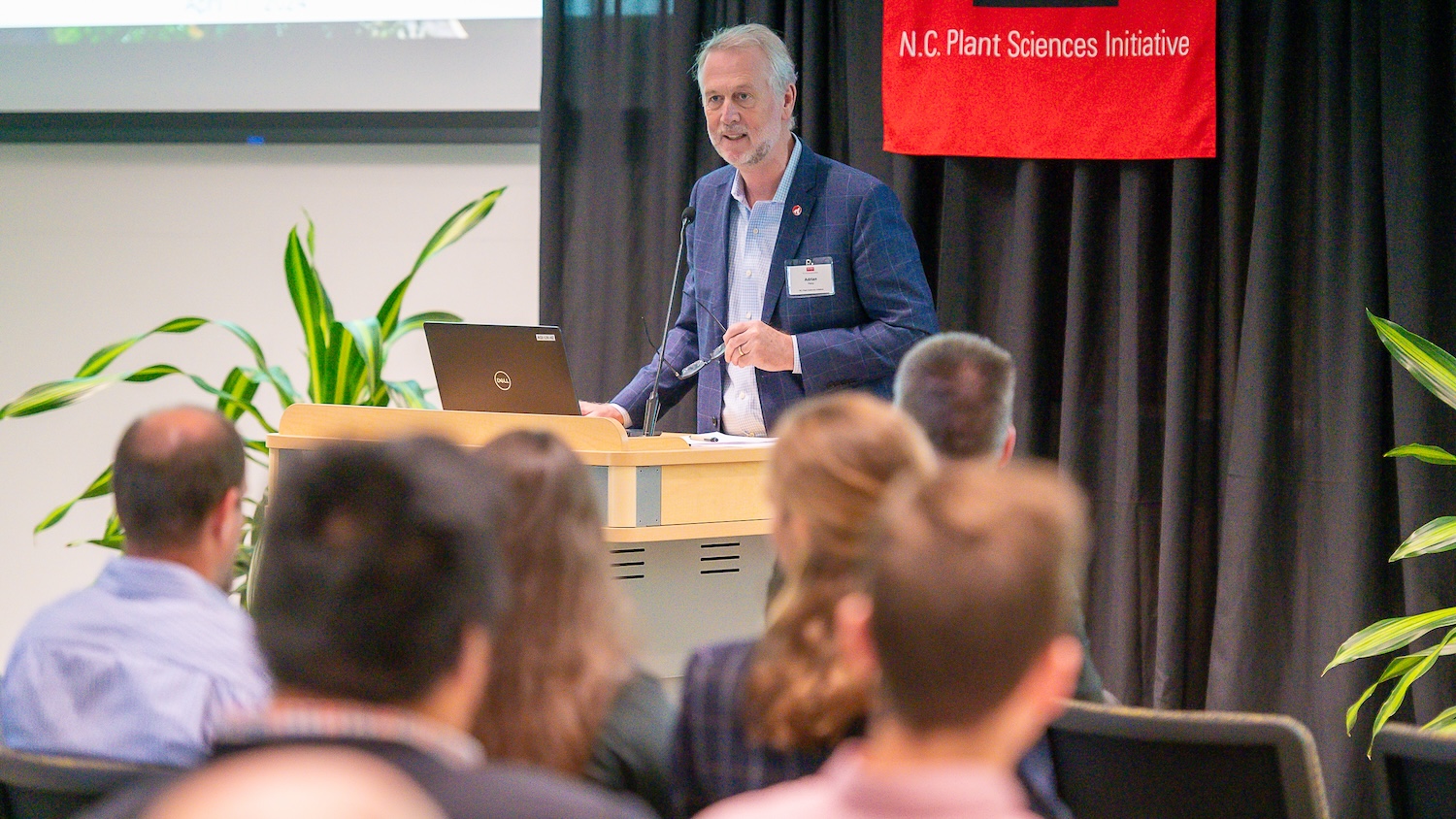Report: Animal production can grow sustainably
As the world’s middle class nearly triples in number, demand for meat, dairy products and eggs is expected to rise by as much as 100 percent by 2050. The question is, can agricultural production meet that demand without causing extensive environmental damage?
An N.C. State University professor was among a group of U.S. academics who addressed this question in the Council for Agricultural Science and Technology Issue Paper, Water and Land Issues Associated with Animal Agriculture: A U.S. Perspective.
Dr. Kelly Zering, associate professor and extension specialist in agricultural and resource economics in N.C. State’s College of Agriculture and Life Sciences, served as chair of a group of five university faculty and a consulting environmental engineer who explored the issue of increased livestock production and environmental impacts. Their paper responded to a 2006 issue paper of the United Nations’ Food and Agriculture Organization, Livestock’s Long Shadow.
Dr. Len Bull, N.C. State animal science professor emeritus, and Dr. Sarah Liehr, a former N.C. State research associate, submitted a proposal for CAST to consider a response paper, and ultimately Zering was asked to serve as lead author of the report, published in August.
The authors concluded that the U.S. model for environmental protection of land and water resources, while not perfect, has achieved substantial improvements. And though Zering is optimistic about the world’s ability to meet production demands and protect resources, there are still issues to address.
“I was surprised at the magnitude of the challenges ahead. In the ’80s and ’90s, it seemed like we had too much agricultural production – grain prices were low, and growers were paid not to produce.
“We have come full cycle now, with tight supplies of food,” Zering said. “With a larger wealthy population in the world, we are consuming more and driving up prices.”
The FAO’s report emphasized negative impacts of animal production on the environment, Zering said. Those included overgrazing, water pollution caused by both animal and crop production and agriculture’s use of large amounts of freshwater for irrigation.
The CAST report reviewed the science behind the FAO’s claims and looked at steps taken by the U.S. to protect land and water resources and came up with a different picture.
“We tried to point out that the U.S. has been engaged in programs to reduce the impact of agriculture for decades now,” Zering said.
Among the programs cited in the CAST report are:
- Soil conservation programs such as the Conservation Reserve.
- The integration of regulation with education and research to minimize environmental impacts of livestock production.
- Best Management Practices, reflected in U.S. Department of Agriculture technical handbooks and Natural Resource Conservation Service fact sheets, designed to help livestock producers build devices or structures and implement practices to minimize pollution on rangelands and other types of intensive livestock operations.
In addition, Zering said the U.S. land-grant system of integrated research, education and extension has helped agriculture make great strides in production and in environmental stewardship. The developed world has such an abundant, affordable food supply, Zering said, “that maybe we’ve overlooked the need to continue increasing productivity.”
“Are we investing enough in agricultural research and education to continue to make the kinds of gains we’ve made in the past?” he said; the gains that will be needed to meet a doubling demand without compromising environmental quality.
The question gets to the heart of the land-grant mission. In addition to helping growers produce more, land-grant research and education have produced environmental benefits, Zering said. Among those are the use of less fertilizer, less water and fewer chemicals to produce livestock and crops.
The CAST report has generated attention that will add travel to Zering’s calendar. He’s been invited to address a conference and meet with environmental officials in Beijing.
In addition to spreading the word about the benefits of an education and research system like the U.S. land-grants, Zering plans to sing N.C. State University’s praises, based on conclusions from this research project.
“I think N.C. State stands out as one of the elite agricultural universities in the world, in terms of its comprehensive coverage of agriculture and the environment. This broad expertise reflects the diversity of agriculture and the rich environmental resources in this state,” Zering said. “I think we have a jewel here.”
-N. Hampton
Note: The other authors of the CAST paper include:
Terence J. Centner, Department of Agricultural and Applied Economics, University of Georgia
Deanne Meyer, Extension Specialist, Department of Animal Science, University of California-Davis
G. Larry Newton, Department of Animal and Dairy Science, University of Georgia, Tifton
John M. Sweeten, Texas AgriLife Research and Extension Center, Texas A&M University System, Amarillo
Steven Woodruff, Woodruff & Howe Environmental Engineering, Inc., Canton, GA


